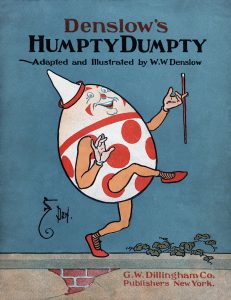
Most parents are familiar with the childhood rhyme of Humpty Dumpty. The moral of the rhyme is that he was doing something dangerous and got hurt doing so. While children have a tendency to go around repeating this rhyme parents and teachers alike can use it as a teaching opportunity.
Where did this Rhyme Originate?
Although rhymes are commonly recited by kids and adults alike, not many individuals actually know where they started or how they evolved over the years. The rhyme was first introduced in Juvenile Amusements in the year 1797. Juvenile Amusements was written by Samuel Arnold. In the original version of the rhyme, the last lines featured old-time language like the words fourscore. The same premise of not being able to put Humpty together was included in the rhyme. T
The original rhyme did not mention an egg. Analysts suggest that the egg was the answer to the riddle. The most common location tie to this riddle actually takes us back to the English Civil War in 1648.
During the war, the town of Colchester was under siege. The story states that a fellow named Jack Thompson had a cannon that was referred to as the name of the now famous rhyme. Thompson was able to do a lot of damage with this mighty cannon and became well-known for his aim.
Trouble strikes when the cannon tumbles to the ground and was unable to be put back together because of its size, no matter how many men tried with all their might to put it back together again. This eventually led to the town of Colchester surrendering. These are all interesting facts that most individuals do not know about the rhyme.
Changes Over Time
As you can see from the original text that is quoted above, the rhyme definitely evolved into more common words over time. The word fourscore is no longer used in the rhyme, which is most likely because that is not a word that children would be familiar with these days. In addition, the other words of the rhyme changed, but the idea remained the same.
Analysts note that the poem does not mention an egg and over time we have simply come to visualize the main character as an egg in visual portrayal of the poem such as picture books. As mentioned earlier, the egg was supposedly the answer to the riddle, but no one can be sure of this underlying meaning because of the ancient origins of the rhyme itself.
What is the Teaching Opportunity?
The teaching opportunity in this childhood rhyme is to inform children about danger while playing. Since children have short attention spans and do not usually want to sit and listen to lectures about why it is important to play safely at school and home, parents and teachers can use rhymes like this one to teach the importance of safety at home and in the classroom.